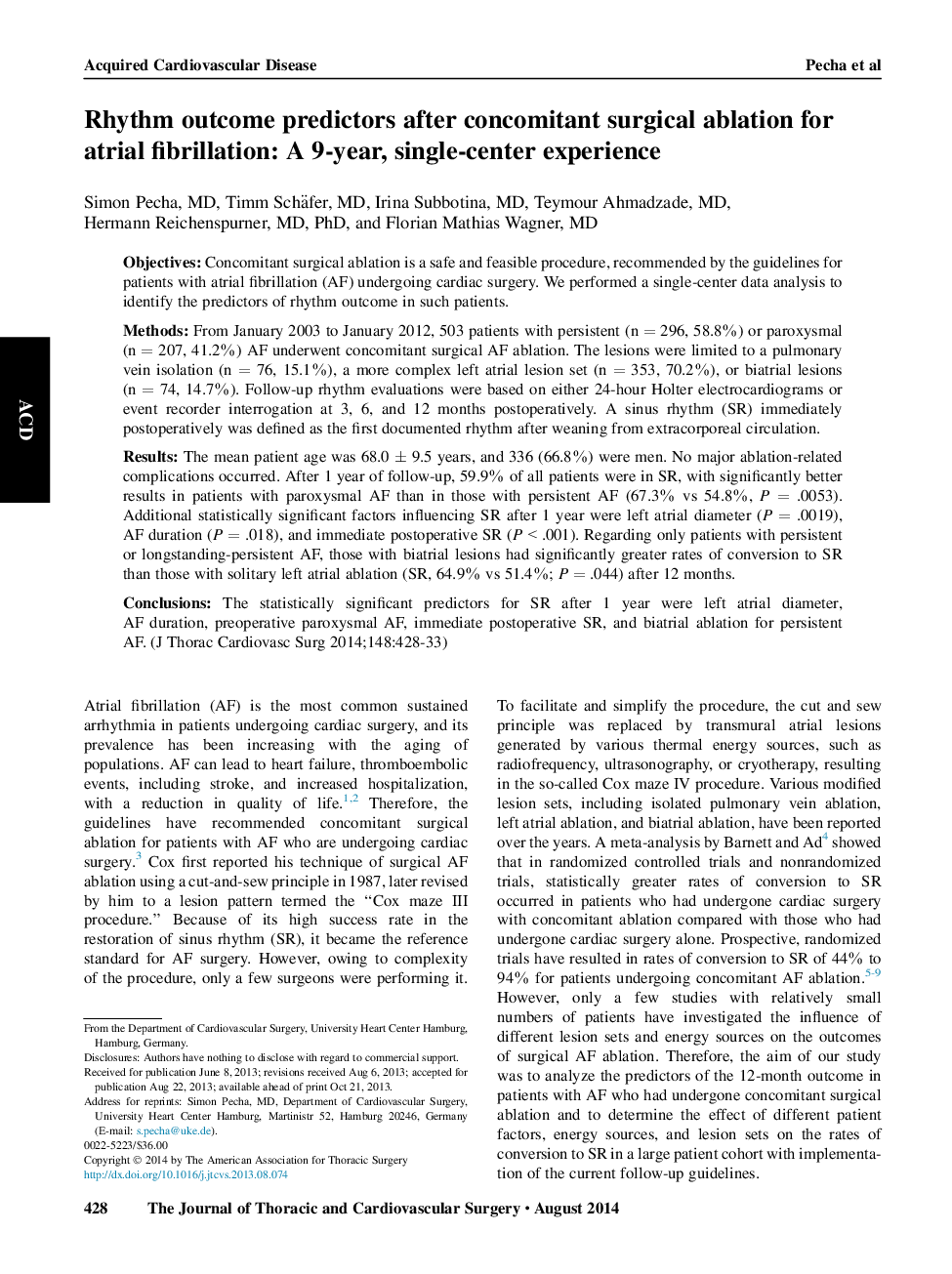| Article ID | Journal | Published Year | Pages | File Type |
|---|---|---|---|---|
| 2980460 | The Journal of Thoracic and Cardiovascular Surgery | 2014 | 6 Pages |
ObjectivesConcomitant surgical ablation is a safe and feasible procedure, recommended by the guidelines for patients with atrial fibrillation (AF) undergoing cardiac surgery. We performed a single-center data analysis to identify the predictors of rhythm outcome in such patients.MethodsFrom January 2003 to January 2012, 503 patients with persistent (n = 296, 58.8%) or paroxysmal (n = 207, 41.2%) AF underwent concomitant surgical AF ablation. The lesions were limited to a pulmonary vein isolation (n = 76, 15.1%), a more complex left atrial lesion set (n = 353, 70.2%), or biatrial lesions (n = 74, 14.7%). Follow-up rhythm evaluations were based on either 24-hour Holter electrocardiograms or event recorder interrogation at 3, 6, and 12 months postoperatively. A sinus rhythm (SR) immediately postoperatively was defined as the first documented rhythm after weaning from extracorporeal circulation.ResultsThe mean patient age was 68.0 ± 9.5 years, and 336 (66.8%) were men. No major ablation-related complications occurred. After 1 year of follow-up, 59.9% of all patients were in SR, with significantly better results in patients with paroxysmal AF than in those with persistent AF (67.3% vs 54.8%, P = .0053). Additional statistically significant factors influencing SR after 1 year were left atrial diameter (P = .0019), AF duration (P = .018), and immediate postoperative SR (P < .001). Regarding only patients with persistent or longstanding-persistent AF, those with biatrial lesions had significantly greater rates of conversion to SR than those with solitary left atrial ablation (SR, 64.9% vs 51.4%; P = .044) after 12 months.ConclusionsThe statistically significant predictors for SR after 1 year were left atrial diameter, AF duration, preoperative paroxysmal AF, immediate postoperative SR, and biatrial ablation for persistent AF.
